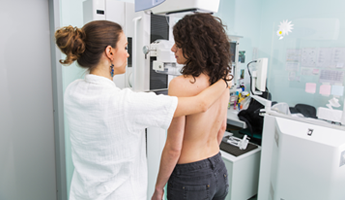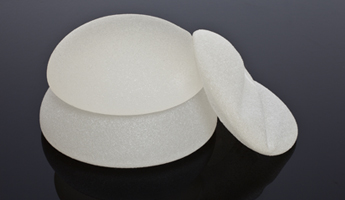The lymph node surgery involves SLNB (sentinel lymph node biopsy) or Axillary node clearance (ANC) depending on whether there are (or not) cancer cells detected in the armpit lymph glands.
As part of your breast cancer treatment, your surgeon has advised you to undergo an operation to take one or two lymph nodes to check whether the lymph glands in the armpit are affected by breast cancer or not.
Lymph glands or ‘nodes’ are small bean-shaped organs that lie along the lymph vessels which run through the body.
This operation is important as the knowledge of whether your lymph nodes are affected by cancer or not can influence the type of cancer treatment you are recommended to have.
This biopsy involves locating the sentinel node (also known as the watch-guard node) and checking whether or not it is affected with breast cancer cells. The sentinel node is the first lymph node into which fluid from the breast drains and is therefore the first place to which breast cancer can spread.
In breast cancer, the sentinel node is most commonly located in a group of lymph nodes underneath the arm. The average number of sentinel nodes removed is two, but may be more. Compared to other methods, Sentinel Lymph Node Biopsy has the least complications after surgery. If the results of the SLNB are positive for cancer, then further treatment to the armpit would be discussed with you. If the results of the SLNB show that the cancer has not spread, no further treatment to the armpit is needed.
Your surgeon will explain any possible complications so that you are aware of these when asked to sign your consent form. Some possible complications are:
Mild allergic reactions to the blue dye used in the test can occur in 1.8% patients. More severe allergic reactions “anaphylaxis” are rare and can affect 2 in every 1000 patients treated (0.2%).
The area of skin on the breast where the blue dye injection is given (whilst you are asleep in the operation), can stay blue for up to 12 months (rarely longer), following the biopsy. You might also notice your skin may have a slight blue/grey tinge for the first 24 hours and there will be a greenish discolouration of your urine for a few days after your operation.
Seroma: Seroma is fluid that sometimes collects beneath the wound and may need draining if it becomes uncomfortable. This is a simple procedure that can be done by a breast care nurse practitioner if needed.
Numbness: You may experience numbness and/or discomfort in the armpit, upper arm and shoulder area. This will usually lessen over time but may not disappear completely.
Shoulder stiffness: You will be given shoulder exercises to carry out after your surgery which can help you maintain a good range of shoulder movement. Your breast care nurse practitioner will advise you on these excercises and provide you with a booklet so you can continue them at home.
Lymphoedema: This is arm swelling that may occur in the tissue below the skin of the affected arm, caused by lymph fluid that cannot drain away. SLNB removes a small number of lymph nodes only and therefore minimises this risk. However, there are further precautions that you can take to prevent or lessen the likelihood of developing lymphoedema, which can be discussed with you by one of the breast care nurse practitioner.
This surgery is often performed as a day case but depending upon the type of breast surgery and other medical conditions you may be required to stay overnight.
Before your surgery you will be asked to attend a pre–admission clinic. At this clinic you will have routine checks e.g. height, weight and blood pressure recordings etc. and the opportunity talk with a breast care nurse practitioner about diagnosis and surgery.
On the morning of/or the day before your surgery you will be asked to attend the breast imaging department where a radioactive substance is injected in the quadrant or quarter of the breast in which cancer lies.
The lymph glands take up the radioactivity slowly and during the operation a small piece of equipment called a ‘gamma probe’ is able to detect a signal given off by this lymph node. once it has taken up the radioactive substance.
We do not expect any risks or side-effects from the low-dose radioactive substance because the total amount of radiation that you receive is less than you would receive from the environment over three months. There is no problem, therefore, in returning back home to your family/children after having the injection (especially if it is performed a day before the actual surgery). If you have any questions or concerns about this please speak to your breast care nurse practitioner or surgeon.
This injection is not suitable for pregnant patients.
When you have been given an anaesthetic and are asleep, a blue dye called ‘patent blue V’ is injected into your breast. The dye is quickly taken up by the lymph node and stains it blue.
During the operation a small cut is made under your armpit. With a combination of a gamma probe and being able to see a blue node, the sentinel lymph node can usually be easily detected (around 90-95% of the time). When the sentinel node cannot be detected we would recommend that an axillary node sample is collected instead. This takes approximately four glands out from the area where we would usually expect the sentinel node to be.
You will be in the recovery room while you are coming round. When you are fully awake and ready to return to the ward, the nursing staff will accompany you back.
![]() SLNB PDF (129 KB)
SLNB PDF (129 KB)
Axillary node dissection involves removing several or all of the lymph nodes from the armpit. This is indicated if there were cancer cells seen in the lymph nodes, either on the ultrasound guided biopsy or on SLNB.
If possible, this will be done during breast surgery (breast conserving surgery or mastectomy). This usually requires a separate incision in the armpit hairline but may be (on occasions) done through the same incision as the breast surgery itself.
Because the number of lymph nodes in the armpit varies from person to person, the number of lymph nodes removed and the length of the operation will be different for each woman.
After axillary dissection, pathologist examines all the lymph nodes. The number of lymph nodes that have cancer cells in them will help the doctors decide what other treatments are best.
Treatment may involve systemic therapies (therapies that treat the whole body), such as chemotherapy or hormonal therapy, and less commonly, radiotherapy to the armpit.
1. Fluid may collect in the armpit: this is called a seroma and may need to be drained using a needle and a syringe; this can be done by a doctor, breast care nurse or another health professional in the clinic or by a GP
2. Wound infection: because the armpit is sweaty and bacteria are present on the skin, the wound can sometimes become infected. Infection occurs in about 1 in 20 patients, following this sort of procedure but if it occurs it can usually be treated with antibiotics. Occasionally, however, we may need to open the wound, drain out the infected fluid and then it may need to be packed, in which case it may take some weeks to heal.
3. Stiffness in the arm or shoulder: this may develop soon after surgery as scar tissue forms in the armpit; it may help to do some approved exercises after surgery
4. Numbness of the arm, shoulder, armpit and parts of the chest can occur because the nerves that supply sensation to the skin may need to be cut in order to remove the lymph nodes; this will usually improve with time but there may be some areas that will always stay numb
5. Lymphoedema: this is the swelling of the arm that may occur in up to 1 in 4 women undergoing this procedure. This occurs because lymphatic vessels have been disrupted by the breast cancer treatment; and can develop a few months or years after surgery. Thus may be brought upon by infection or injury so it’s important that you take of precautions when using the arm for activities that could graze or break the skin, like gardening. There is no restriction with regards to exercising that arm.
5. Thickened scar: Scar healing is unpredictable and although usually the scar heals up to a fine line, occasionally, the scar heals in a thickened fashion called a ‘keloid’ or ‘hypertrophic’ scar.
6. Haematoma: Some bruising is inevitable after axillary node clearance. However, very occasionally blood collects in a lump underneath the wound (known as a haematoma) and this may need to be removed, either in the clinic or by a second operation.

Do you have breast symptoms or wish to discuss treatment for breast cancer or consider reconstruction?
Consultation Process ›
Not happy with the size or shape of your breasts?
Find out more ›